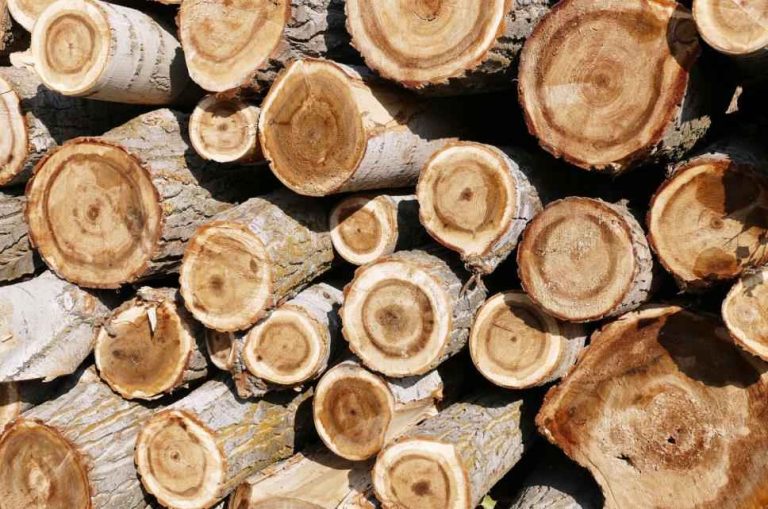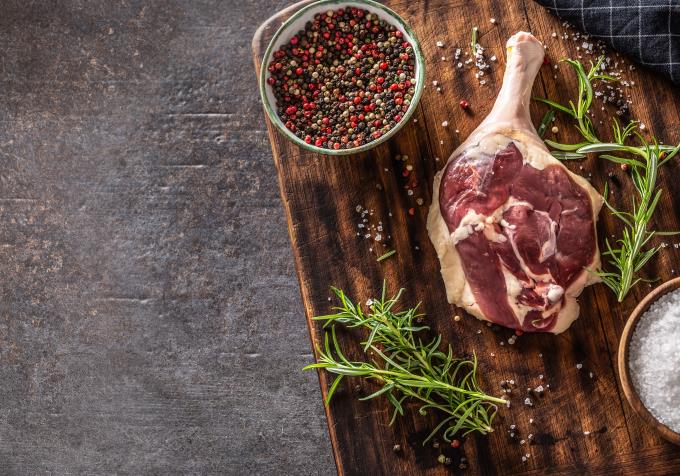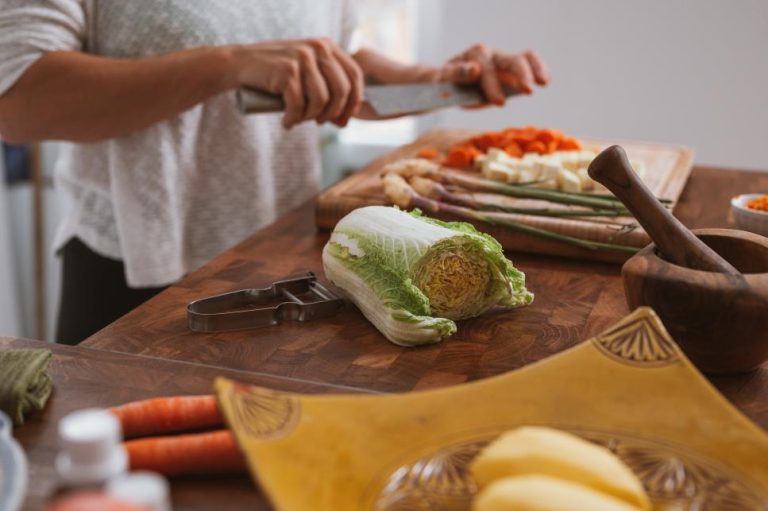Acacia has been one of the most popular wood choices for various applications. It’s a fast growing sustainable wood available in many parts of the world, favored by many thanks to its quality.
As expected, acacia is a widely used material in countertops, cabinets, and cutting boards. However, there isn’t just one single type of acacia. Many trees and shrubs share the same name, and the traits we get from them as a cutting board somewhat differ.
This review article on acacia cutting boards will outline their characteristics, go over the different types of acacia, and conclude if cutting boards made from this wood can make a good product for your knife store.
What’s acacia wood
Acacia is a large genus of trees and shrubs that belong to the subfamily of Mimosoideae. Some acacia trees grow striking symmetrical flowers in winter and spring, like Acacia dealbata; some produce gum used for pharmaceutics and inks, like Acacia senegal.
There are approximately 1,300 species of acacia, with more than 1,000 of them being native to Australasia. You can anticipate ranging qualities when you have this many acacia trees with different characteristics. We’ll cover the features of acacias types in the later parts of this article.
Buy Wholesale Cutting Boards and Start Scaling up with Us Today
Contact us and connect with a sales rep to get a free quote.
What to expect from an acacia cutting board?
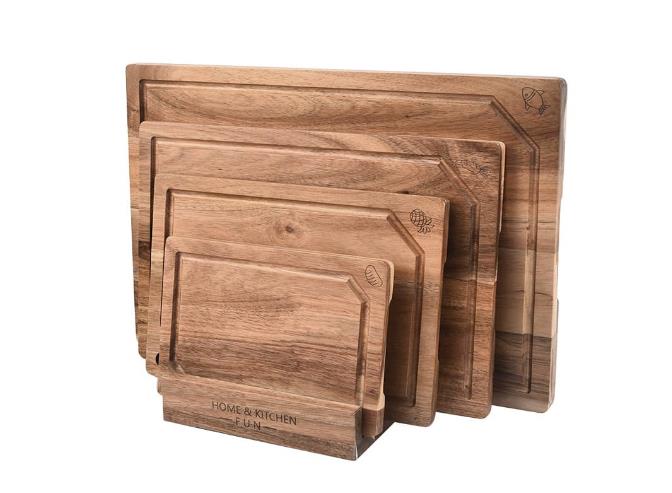
Determining if a cutting board is perfect or not takes multiple considerations. Here’s our review of acacia cutting boards to help you decide if selling them in your store is a good idea.
Hardness
The standard for measuring wood’s hardness is the Janka hardness test. Like the Rockwell hardness test for knife steel, the Janka hardness uses an indenter inserted into the wood.
It takes about 1,500 to 2,000 lbs of force to insert an indenter halfway through most acacia used for cutting boards. This testing shows acacia has a higher hardness than maple, oak, and hickory.
Water resistance
Being a hardwood carrying tiny pores, acacia is able to resist moisture and bacteria incredibly well. The juices from foods and regular washing won’t damage acacia cutting boards that easily.
This level of water resistance makes it an ideal cutting board for every setting. Water simply won’t be able to penetrate the surface, whether your customers chop juicy fruits and vegetables for hours or cut ice for cocktails.
Sanitization
Acacia makes a sanitary cutting board. Like all wood, acacia naturally kills bacteria and does this better than most other options. Its superior ability to resist water and moisture is the reason behind its high sanitary feature.
Furthermore, acacia’s hardness also contributes to this. It won’t get knife marks quickly, avoiding tiny grooves for bacterias to hide.
Durability
All these remarks about acacia cutting boards bring us to durability. As you can expect, acacia makes a durable cutting board that your customers can use for many years.
Utilizing the necessary care practices will extend the lifespan of acacia cutting boards even further. A happy cutting board is a clean and oiled one.
Maintenance
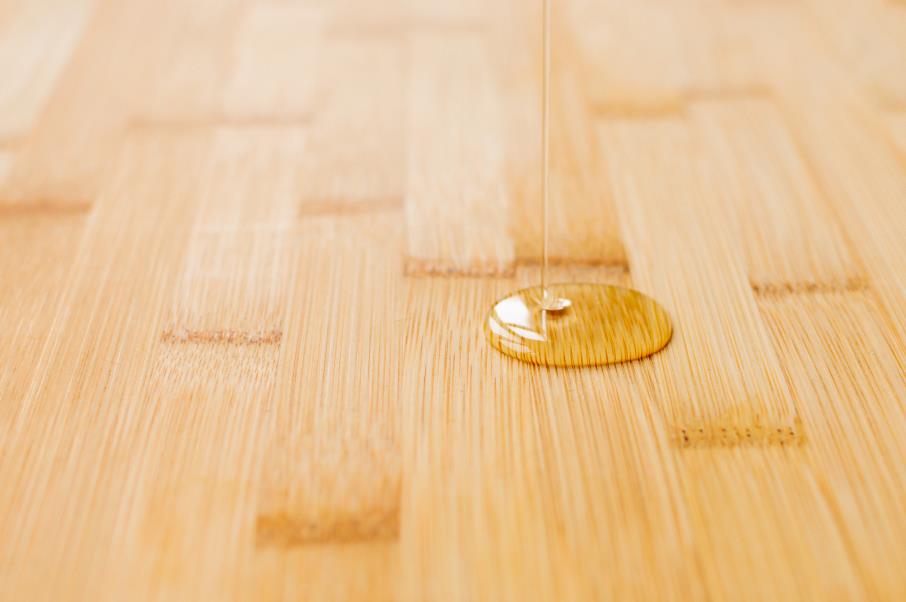
Every wooden cutting board has maintenance requirements – acacia is no different. Your customers should periodically coat the board’s surface with food-grade mineral oil once a month or so.
A regular oiling routine is a must with acacia cutting boards as they don’t have a rich amount of natural oils. It will make the board extra water-repellant and protect against color changes from direct sunlight.
As with all the other woods, acacia cutting boards must be hand washed using warm water and dish soap.
Although some manufacturers may advertise their wooden cutting boards as dishwasher safe, warn your customers to avoid it. The high heat can cause wooden boards to crack or warp.
Ease on knives
A cutting board is important, but your customer’s favorite knife is presumably above it. The cutting board and the cutting edge are in constant contact. If the cutting board is too rigid, it will dull the knife faster, requiring your customers to sharpen more often.
On the contrary, a soft cutting board will get scratched easily. There should be a balance between hardness and how gentle the cutting board is on knives. Acacia is at a sweet point in this matter, not getting marks as easy but not damaging the knife’s edge either.
Colors
The aesthetics are just as essential for cutting boards as their functionality. Many cooks turn to wooden cutting boards for their natural beauty.
Acacia also doesn’t fail to deliver in this. It has a mainly brown color with golden to rich, dark shades. The dark-colored acacia cutting boards put the stains out of sight, while golden ones bring light to kitchens.
Acacia cutting boards pros
- Acacia is one of the most durable hardwoods for cutting boards. It’s resistant to moisture, scratching, and won’t warp easily.
- Over 1,300 species make acacia a sustainable wood for all industries.
- Acacia is aesthetically pleasing with a beautiful grain pattern, regardless of the species.
- Acacia cutting boards are easy on knives but sturdy enough to prevent unwanted marks.
Acacia cutting board cons
- It can be expensive, but the varieties offer affordable options.
- Most acacia cutting boards have a weight to them. This can make it difficult to wash and move around the kitchen.
- Acacia isn’t known for its workability. Even though the surface won’t get scratched fast, it will eventually. When your customers resand it to remove them, it will pose challenges.
- Acacia tends to lose its color after exposure to sunlight. Its color can fade away or turn gray, unlike shifting to a darker shade like most other hardwoods.
Buy Wholesale Cutting Boards and Start Scaling up with Us Today
Contact us and connect with a sales rep to get a free quote.
Different varieties of acacia
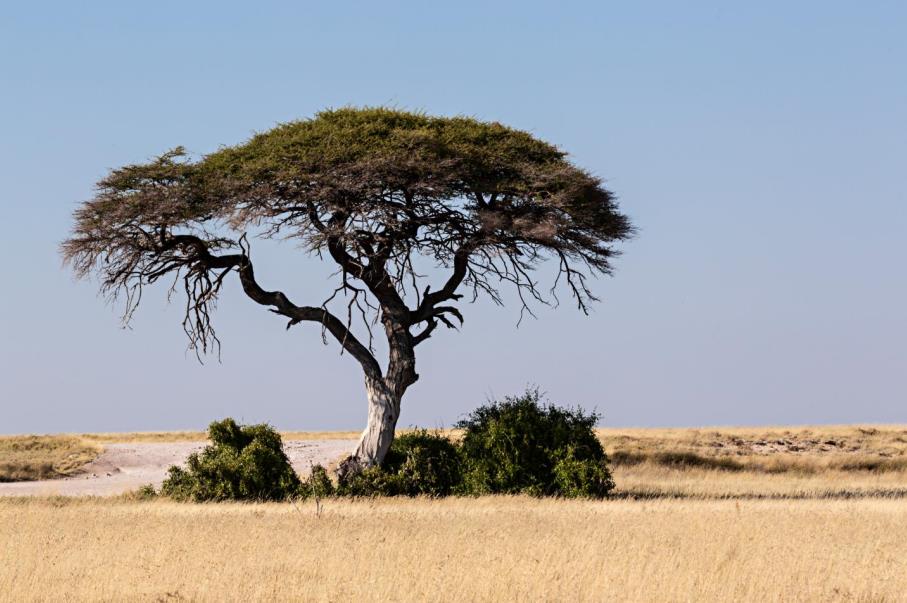
Since there isn’t a single acacia, the cutting boards made from different variations can have unique characteristics. Here are the common acacia species used as a cutting board material and their attributes as material for a knife’s best friend.
Wattle
Wattle is the name of flowering acacia with varieties. So, all wattle are acacias. They usually have yellow and white flowers. Wattle is a common name you’ll hear when finding the best acacia for the cutting board you have in mind.
There isn’t a difference between wattle and acacia as they are essentially the same. We will look at specific varieties below.
Raspberry jam (Acacia acuminata)
Also known as jam wattle, Acacia acuminata is extremely dense. It ranks as one of the hardest woods, with 3,100 lbf required on the Janka hardness scale.
This acacia variety can make a great cutting board for robust work, such as cleaving bones – sounds perfect for butcher’s blocks. Raspberry jam has a dark-red brown color with a uniform texture.
Acacia confusa
Native to Southeast Asia, Acacia confusa is moderately hard at 1,460 lbf Janka hardness. If you’re buying cutting boards made in Southeast Asia, they are likely made from this acacia. It’s water resistant and commonly used for musical instruments other than cutting boards.
Acacia confusa has an orange-brown to light brown color, with its sapwood having a yellow golden appearance.
Bendee (Acacia catenulata)
Growing in the dry regions of Australia, Acacia catenulata, commonly known as bendee, produces a heavy, dense wood. Bendee has a fine texture and colors ranging from golden, light, and dark brown.
It makes a heavy cutting board, which can be a selling point or a deal breaker, depending on your customers’ preferences.
Acacia wood vs. other cutting board material
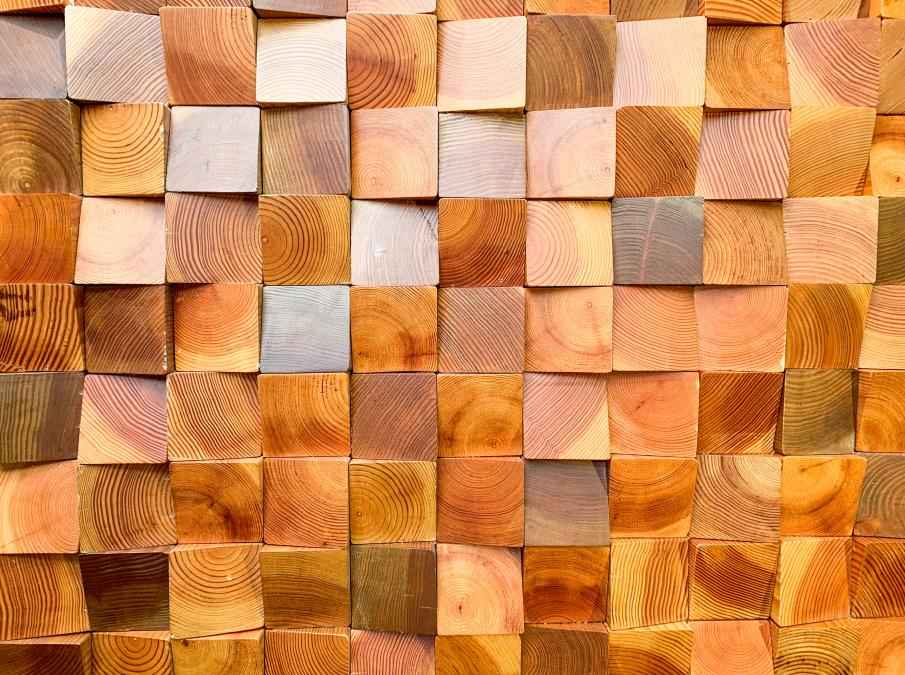
If acacia doesn’t make the ideal cutting board for your knife store, or you want to hear about alternatives, here is how it compares to others.
Acacia vs. maple
Maple is a common choice for kitchen products. It grows widely in many parts of North America. Manufacturers often turn to maple for making budget-cutting boards.
When compared to acacia, maple doesn’t take our breath away. Acacia is significantly harder than maple and durable. Hard maple has a rating of 1,450 lbf, falling below even the soft species of acacia.
While it can’t beat acacia, maple is an inexpensive material. Maple cutting boards can be ideal knife stores appealing to home cooks and average users.
Acacia vs. teak
Teak is hands down one of the best woods for cutting boards. It has plenty of natural oils that don’t require the user to oil as frequently as acacia. Teak has tight grains that resist water damage efficiently.
On the other hand, acacia has a higher hardness and more color variations. The sheer number of acacias offers more options than teak. If you’re looking to offer low-maintenance cutting boards to your customers, teak is a sensible pick.
Still, there is more to these two distinct wood choices for cutting boards. Read this article comparing acacia and teak.
Acacia vs. bamboo
Bamboo cutting boards have gained some traction over the last couple of years. They are naturally resistant to water, lightweight, and hard enough to be durable. However, bamboo doesn’t achieve these properties the same as acacia or any other hardwood.
Bamboo is dense and doesn’t have the same natural oils. It can make a sturdy cutting board, but it can dull knives quickly. This downside is enough for users to shy away from bamboo cutting boards.
The one benefit of bamboo is that it’s maintenance-free and incredibly resistant to moisture. In fact, it floats on water. Nonetheless, acacia and other similar hardwoods make a better cutting board than bamboo.
Should you sell acacia cutting boards?
Having differently-sized acacia cutting boards is great for any knife store. These cutting boards are durable, resist water damage, and are gentle on knives.
We have a selection of acacia cutting boards that fit your knife store. Browse our cutting boards from here and contact us to request a quote.

